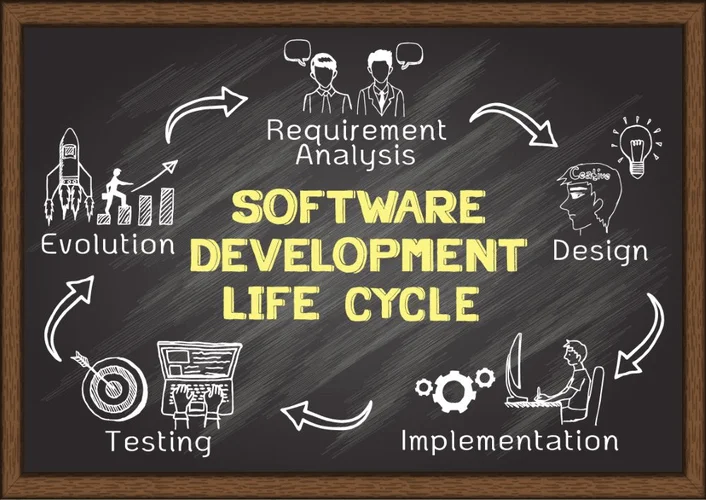Microservices have emerged as a popular development follow for teams who want to release complex systems rapidly and reliably. Kubernetes is a natural platform for microservices as it could handle the orchestration required to deploy many cases of many individual microservices. Additionally, there are service mesh applied sciences that carry widespread networking concerns from the application layer into the infrastructure layer, making it easy to route, secure What is Microservices Architecture, log, and take a look at community traffic. To design and deploy microservices efficiently, create a tradition with minimal restrictive processes balanced with the responsibility to acknowledge and repair issues when they occur. The infrastructure staff must be small, as a result of the cloud service supplier handles most operational duties.
Observe 6 Key Steps To Deploy Microservices In Manufacturing
The deployments are used to deploy and handle the containers that implement the microservice. The service useful resource exposes these containers to the other microservices and to the entrance finish utility that exposes the microservice to end-users. We realized that this can be a bad design so after that we took a step back and began creating microservices that will remedy sure domain issues like Continuous Integration, User management, and so on. Now we’ve fewer microservices however nonetheless are able to arrange our teams in multiple squads and spend little or no time on upkeep on our infrastructure. On the opposite hand, the microservice architecture consists of separate companies as a substitute of a single unit. These companies symbolize separate codebases that communicate via APIs.

Getting Began With Spring Boot:
Microservices are often deployed in containers — digital working system environments that act as packaging for the microservices. Docker is a lightweight system of virtual machines that helps builders handle and deploy microservices more efficiently. Deploying microservices on AWS requires thoughtful preparation to leverage the cloud platform’s full potential effectively.
- This implies that group members will have the power to work on the identical project and not utilizing a nice need for coordination.
- The microservice is deployed to a staging setting for additional testing and validation.
- After the codes are examined throughout launch time, this stage turns into energetic.
- They’re smaller in size and specialised, which makes them easy to know.
- However, bear in mind that the post is obvious that tenancy info should be propagated with all requests, saved with all information at rest, and optionally take a look at knowledge is isolated in separate databases and message queues.
- You can do that if your Docker is put in on a quantity of Docker hosts or nodes.
Step 1: Organising An Ecs Cluster

Figure 1 depicts a simple microservice-based structure showcasing the providers’ independent, isolated nature. Each specific entity belonging to the applying is isolated into its service. For instance, the UserService, OrderService, and NotificationService give consideration to coping with totally different components of the business.

These Dockerfiles make linking microservices into a big application much simpler. This means that group members will be able to work on the same project without a nice want for coordination. Teams working on a particular microservice could make choices on their very own, without having to wait for the others.
Microservices help arrange teams into models that concentrate on creating and owning particular business capabilities. This granular focus improves total enterprise communication and efficiency. It is necessary that service boundaries are clearly outlined before migrating to a microservice architecture. This could also be enough to deploy microservice characteristic branches in a test setting. If your feature branch happens to malfunction and save invalid information in the test database, it is inconvenient however won’t trigger a manufacturing outage. Likewise, placing invalid messages on a message queue might break the take a look at setting, but your production environment is isolated.
If you’re finding bugs inproduction, you can start by implementing unit tests and continuous integration(CI). Given the novelty of microservices deployments, by no means choose the feasibility, cost and efficiency of cloud companies primarily based on your history with legacy purposes and servers. Likewise, don’t assume cost-performance tradeoffs in storage — research the financial and efficiency differences between solid-state drives and onerous disk drives, and you may determine SSDs are well price the incremental price.
Doing so creates a distributed structure where your services not have to be deployed collectively to a single goal however as a substitute are deployed individually and may be deployed to a quantity of targets. The development of applications from a set of microservice Legos considerably complicates the means to monitor and troubleshoot systems and their efficiency. Various microservices typically trigger a cascade of events that results in an utility failure. To reduce failures — which aren’t a possibly, but a actuality — incorporate monitoring and troubleshooting into microservices design.
Product-focused teams promote agility, tight communication and coordination. This staff construction also eases the build course of for essential API interfaces that allow course of automation and microservices integration. Enterprise data centers usually consolidate databases and storage volumes onto a quantity of systems to improve operational efficiency, cut licensing prices and simplify software, policy and security management.
Microservice architectures attempt to keep issues as easy as attainable to avoid the tight coupling of elements. In some instances, you would possibly find yourself utilizing an event-driven structure with asynchronous message-based communications. But once again you should look into basic message queue companies like RabbitMQ and keep away from adding complexity to the messages transmitted over the network. Microservices work well when you’ve a stable grasp of the completely different services required by your system. However, microservices are rather more troublesome to handle if the core requirements of an software are not properly defined. It’s fairly pricey to redefine service interactions, APIs, and information buildings in microservices since there are typically many more moving elements that must be coordinated.
After successful sanity testing in the pre-production surroundings, the supervisor approves the microservice for deployment to production. Importantly, there is no extra build pipeline; the same Docker image from the pre-production setting is promoted to manufacturing, and this pipeline can be simply constructed using Azure DevOps. For API management, you’ll want a versatile and collaborative API-building tool.
The Feature Branch channel has a version rule that requires SemVer pre-release tags to not be empty, with a regular expression of .+. The Octopus server or workers that execute the steps must have kubectl and the AWS aws-iam-authenticator executable obtainable on the trail. Now, I assume the real challenge is to decompose your problem domain in order to have unbiased modules, micro-service or not. Too prolong the above, the one most necessary matter to debate is tradition compatibility and never solely with the development staff.
Teams are trying to create something that they think will be the best suited answer for them. A few years in the past, after we had been starting with microservices we tended to create a microservice for every entity within the system and one microservice which was doing all the business logic and orchestration of other companies. Docker is a software that you just set up in your computer and run containerized applications with. If you have Docker put in in your laptop, you can use Kubernetes to automate container operations like administration, networking, security, scaling, and so on. You can do this in case your Docker is put in on a number of Docker hosts or nodes. As they work on large initiatives that take up an excessive amount of time and effort, the microservices method allows groups to separate them into several impartial providers.
Access the REST endpoints defined in the controller using a web browser or API testing tools like Postman. Microservices talk with each other through well-defined APIs, typically utilizing lightweight protocols like HTTP or messaging queues.
Its features similar to multi-dimensional data collection and flexible querying are good for microservice upkeep. It might help builders hold track of system metrics — including reminiscence usage and CPU consumption — over a given time interval and can be used to determine the health of a software system. While a microservice structure has quite a few benefits, it also will increase complexity. Atlassian developed Compass to assist corporations manage the complexities of distributed architectures as they scale. It’s an extensible developer expertise platform that brings disconnected details about all the engineering output and team collaboration together in a central, searchable location. When it involves unit tests it’s going to still be quite much like the monolith and you shouldn’t feel more pain at that degree.
Transform Your Business With AI Software Development Solutions https://www.globalcloudteam.com/ — be successful, be the first!


